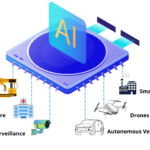The metaverse is a vision of what many in the computer industry believe is the next iteration of the internet: a single, shared, immersive, persistent, 3D virtual space where humans experience life in ways they could not in the physical world.
Some of the technologies that provide access to this virtual world, such as virtual reality (VR) headsets and augmented reality (AR) glasses, are evolving quickly; other critical components of the metaverse, such as adequate bandwidth or interoperability standards, are probably years off or might never materialize.
The concept is not new: The term metaverse was coined in 1992 by author Neal Stephenson in his sci-fi novel Snow Crash, and work on the technologies that underpin a virtual reality-based internet date back decades.
The metaverse is an embodied internet where you’re never alone. Unlike a Zoom call that is scheduled and disappears when you’re done, the metaverse is always on and affords social interactions with peers. This transition has profound implications for capability-building and learning.
A New Way to Teach and Learn
The new generation of virtual reality (VR) headsets is the portal to the metaverse. Head-mounted VR displays engulf the senses and offer an unrivalled sense of embodied presence. Users can move freely through a 3D scenario and interact with the world around them with their hands, just like real life. VR technology is mature enough that it’s no longer part of Gartner’s Hype Cycle.
VR engages the brain’s motor system and builds muscle memory. Just like a flight simulator prepares pilots for emergency landings, VR can train anything, from farming skills to fire fighting. Skills that play to the unique strengths of the metaverse include spatial training, such as involving the hands and body for tasks that are too dangerous, expensive, inconvenient, or simply impossible to practice in real life.
Metaverse in Healthcare/Medical education has the potential to be an interactive, immersive, and recreational experience tailored to every individual. It can provide new opportunities for healthcare providers to interact with patients in ways that are more intimate. It could for example as walking through a three-dimensional model of the human body with patients, discussing diagnoses and treatments. This would allow providers to simulate the effect of a proposed treatment on the patient’s body before it is applied, creating a more personal and informative experience compared to what is currently possible with two-dimensional images on a screen.
3 Ways the Metaverse Can Positively Impact Learning and Capability Building
1. Learn and connect in an immersive virtual campus
Before and during COVID-19, learning had already begun to move from physical classrooms to more virtual and blended spaces. The metaverse facilitates an immersive campus life, where learners wearing VR headsets enter the virtual campus or university to learn, explore, and socialize. In this digital space, for example, learners can delve into different learning pods, visit libraries and breakout rooms, meet coaches and counsellors, and hang out with peers.
These digital experiences can truly democratize education, by bringing people from geographically dispersed locations and varied economic backgrounds together to learn, in a cost-effective, flexible, and quicker duration. For example, in September 2023, the planned Kenya-KAIST virtual campus located 60 kilometres from the capital city of Nairobi will allow the institution to extend their reach across continents, allowing students to learn together on cutting-edge topics without having to leave their home countries.
2. Enhance real-world skilling in Virtual and Hybrid environments
The metaverse provides experiential, embodied skilling opportunities using real-world scenarios and high-pressure situations, where you can make mistakes without consequence. When well designed, it combines VR with data science and spatial design to improve learner engagement, confidence, and application. Some examples of the benefits of training in the metaverse include:
- Experiential learning – Pharmaceutical leader Novartis trains life-saving lab skills with high-fidelity, multiplayer VR simulation. Students step into a virtual lab to interact with instructors and practice welding tubes, removing bag caps, and labelling bags with unlimited do-overs.
- Deliberate practice – The metaverse provides intense practice and feedback loops, where learners practice many variations of a concept to hone skills. Walmart’s Spark City game is different every time the game is played. If customers appear within 10 feet, players must ask if they can help, but not before they’ve addressed spills and other safety hazards.
- State-dependent learning – Providence Health triggers psychological stress of responding to microaggressions in the workplace. A live actor captured in 3D volumetric video appears through the camera lens of your phone or tablet as a hologram standing in the room in front of you, for learning and retrieval taking place under the same conditions.
3. Explore different worlds through visualization and storytelling
Visualization and storytelling are two hallmarks of a metaverse learning experience and much needed today after the profusion of boring Zoom experiences during COVID-19. Through VR technology, learners can step into an entirely different world or into another person’s shoes. For example, healthcare leader DaVita builds patient empathy by using an interactive, multi-sensory first-person story.
Stepping into meta worlds facilitates visualization of scenarios, including complex development challenges. For example, a learner can use a VR headset to examine a street transformation in South Asia or explore life in a green Smart City. Through bite-sized 360-degree stories, virtual tours, and visualizations, learners “enter” crucial global development challenges, including climate change, education, gender, urban development, international trade, and public health.







